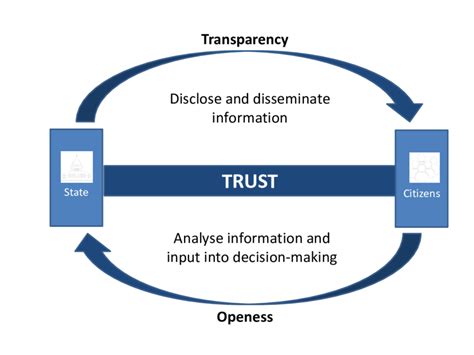
A Maine Coon cat with a rare blue tortie coat has captivated the internet, drawing attention for its striking and unusual coloration, described by many as fairy-like. The feline, whose images have gone viral across social media platforms, showcases a unique blend of blue and tortoiseshell patterns, a genetic rarity that has sparked widespread fascination and admiration.
The internet has been collectively charmed by a Maine Coon cat boasting an exceptionally rare blue tortie coat, its ethereal appearance setting social media ablaze. The feline’s striking color combination, a muted mix of blue and tortoiseshell, is a genetic marvel that has garnered significant attention and a flurry of appreciative comments.
According to the original article from Yahoo Lifestyle, the cat’s unique coloration is a result of complex genetic factors. Tortoiseshell cats, characterized by patches of black and orange, are almost exclusively female, due to the way the genes for coat color are carried on the X chromosome. The “blue” in “blue tortie” refers to a dilution of the black pigment, resulting in a softer, grayish-blue hue. The combination of this diluted black with the orange patches creates the distinctive blue tortie pattern. Maine Coons, known for their large size and fluffy coats, further enhance the visual impact of this rare coloration.
The online community has been vocal in its praise of the cat’s appearance, with many users comparing it to a mythical creature or a character from a fairytale. The viral images have been shared widely, accompanied by comments expressing awe and admiration for the cat’s beauty. The popularity of the photos highlights the enduring appeal of unique and visually striking animals on the internet.
The rarity of the blue tortie Maine Coon adds to its allure. Breeders and feline enthusiasts alike recognize the specific genetic combinations required to produce this coloration, making it a highly sought-after trait. The cat’s newfound internet fame is likely to further increase interest in Maine Coons and their diverse range of coat colors and patterns.
Understanding the Blue Tortie Coloration
The “blue tortie” coloration is a captivating example of feline genetics at play. To fully appreciate its rarity and beauty, it’s crucial to delve into the underlying mechanisms that govern coat color in cats.
Coat color in cats is primarily determined by genes located on the X chromosome. Female cats, possessing two X chromosomes (XX), have the potential to express two different alleles (versions of a gene) for coat color, one on each X chromosome. This phenomenon is responsible for the tortoiseshell pattern, which typically involves patches of black and orange.
Male cats, with only one X chromosome (XY), can only express one allele for coat color on the X chromosome. As a result, they are usually either black or orange, but not both (unless they have a rare chromosomal abnormality like XXY, which can result in tortoiseshell males, although they are usually sterile).
The gene responsible for the orange/non-orange (black) coat color is located on the X chromosome. The orange allele (O) produces orange pigment, while the non-orange allele (o) allows for the production of black pigment. In female cats, if one X chromosome carries the O allele and the other carries the o allele, the cat will be tortoiseshell.
However, the expression of these alleles is not uniform across the entire coat. A process called X-chromosome inactivation, or lyonization, occurs early in embryonic development. During this process, one of the two X chromosomes in each cell is randomly inactivated. This means that in some cells, the X chromosome carrying the O allele is active, resulting in orange fur, while in other cells, the X chromosome carrying the o allele is active, resulting in black fur. The random inactivation of X chromosomes leads to the characteristic patchwork pattern of tortoiseshell cats.
The “blue” in “blue tortie” refers to a dilution of the black pigment. This dilution is caused by a separate gene, the dilute gene (D/d). The dominant allele (D) allows for full expression of black pigment, while the recessive allele (d) causes the black pigment to be diluted to a grayish-blue color. A cat must inherit two copies of the recessive allele (dd) to exhibit the dilute phenotype.
Therefore, a blue tortie cat is a female cat with the genotype XOXo dd. She has one X chromosome carrying the orange allele (O) and another carrying the non-orange allele (o), resulting in the tortoiseshell pattern. She also has two copies of the recessive dilute allele (dd), which dilutes the black pigment to blue.
The resulting coat is a mosaic of orange and blue patches, creating the distinctive blue tortie pattern. The specific arrangement and intensity of the colors can vary greatly, making each blue tortie cat unique.
Maine Coons, with their long, flowing coats, further enhance the visual impact of the blue tortie coloration. The combination of the rare color pattern and the breed’s characteristic size and fluffiness makes these cats particularly striking.
Maine Coons: Gentle Giants with a Rich History
The Maine Coon is one of the oldest natural breeds in North America. Originating in Maine, as the name suggests, these cats are known for their large size, intelligence, and gentle personalities. They are often referred to as “gentle giants” due to their affectionate nature and playful demeanor.
The exact origins of the Maine Coon are shrouded in mystery, but several popular theories exist. One theory suggests that they are descendants of long-haired cats brought to America by sailors in the 17th and 18th centuries. These cats may have interbred with native short-haired cats, resulting in the development of the Maine Coon breed.
Another theory links the Maine Coon to Marie Antoinette, the Queen of France. According to this legend, Marie Antoinette attempted to escape France during the French Revolution with her prized possessions, including her long-haired cats. While the Queen was captured before she could reach America, her cats supposedly made it to the shores of Maine, where they interbred with local cats.
Regardless of their exact origins, Maine Coons quickly gained popularity in the United States. They were exhibited at early cat shows in the late 19th century and have remained a beloved breed ever since.
Maine Coons are characterized by their large size, muscular build, and long, flowing coats. Males typically weigh between 13 and 18 pounds, while females weigh between 8 and 12 pounds. They have a distinctive rectangular body shape and a long, bushy tail.
Their coats are thick and water-resistant, providing protection from the harsh Maine winters. They have a shaggy appearance, with longer fur on the ruff, belly, and britches (the back of the hind legs). Maine Coons come in a wide variety of colors and patterns, including tabby, solid, and tortoiseshell.
In addition to their physical characteristics, Maine Coons are also known for their intelligence and gentle personalities. They are highly trainable and enjoy playing games and interacting with their owners. They are also known for their distinctive vocalizations, which include chirps, trills, and meows.
Maine Coons are generally healthy cats, but they are prone to certain genetic conditions, including hypertrophic cardiomyopathy (HCM), a heart disease, and hip dysplasia, a joint problem. Responsible breeders screen their cats for these conditions to minimize the risk of passing them on to their offspring.
The Maine Coon’s combination of impressive size, striking appearance, and affectionate personality makes it a popular breed around the world. Their adaptability to different environments and their ability to bond with humans have contributed to their enduring appeal.
The Allure of Rare Coat Colors in Cats
The fascination with rare coat colors in cats is deeply rooted in human appreciation for beauty and novelty. Coat color is one of the most visible and variable traits in cats, and rare colors and patterns often command significant attention and admiration.
Several factors contribute to the allure of rare coat colors:
- Genetic Rarity: Rare coat colors are often the result of specific genetic combinations that are uncommon in the general cat population. This rarity makes these cats unique and highly sought after.
- Visual Appeal: Many rare coat colors are visually striking and aesthetically pleasing. The combination of colors and patterns can create a captivating and unusual appearance.
- Breed Standards: In some cat breeds, certain coat colors are considered more desirable or valuable than others. Breeders often strive to produce cats with these rare colors to meet breed standards and enhance the breed’s overall quality.
- Collectibility: Rare coat colors can make cats more collectible, particularly among cat enthusiasts and breeders. These cats may be seen as valuable investments or prized possessions.
- Internet Culture: The internet has played a significant role in popularizing rare coat colors in cats. Viral images and videos of cats with unusual appearances can quickly spread across social media, generating widespread interest and admiration.
In addition to the blue tortie, other rare coat colors in cats include:
- Chocolate and Lilac: These colors are dilutions of black and chocolate, respectively, and are caused by recessive genes.
- Cinnamon and Fawn: These colors are variations of red and cream, respectively, and are also caused by recessive genes.
- Smoke: This pattern occurs when the base of the hair shaft is white or silver, while the tips are colored.
- Colorpoint: This pattern is characterized by darker coloration on the points (ears, face, paws, and tail) and a lighter body color.
- Calico: This pattern is similar to tortoiseshell but includes patches of white.
The pursuit of rare coat colors in cats has led to advancements in feline genetics and breeding practices. Breeders are constantly working to understand the genetic mechanisms that control coat color and to develop new techniques for producing cats with desired colors and patterns.
The Impact of Social Media on Animal Popularity
The rise of social media has had a profound impact on animal popularity, transforming the way we discover, share, and appreciate animals from around the world. Platforms like Instagram, Facebook, Twitter, and TikTok have become powerful tools for showcasing the beauty and uniqueness of animals, leading to increased awareness and appreciation for diverse species and breeds.
Social media has several key effects on animal popularity:
- Increased Visibility: Social media allows animal owners and enthusiasts to share photos and videos of their pets with a global audience. This increased visibility can lead to widespread recognition and popularity for individual animals and entire breeds.
- Viral Sensations: Animals with unique characteristics, such as rare coat colors or unusual behaviors, often become viral sensations on social media. Their images and videos are shared widely, generating millions of views and comments.
- Breed Popularity: Social media can drive demand for certain animal breeds. When a particular breed becomes popular online, more people may be interested in acquiring one as a pet.
- Conservation Awareness: Social media can raise awareness about endangered species and conservation efforts. Images and videos of rare and threatened animals can help to educate the public and inspire action to protect them.
- Animal Welfare Advocacy: Social media can be used to advocate for animal welfare. Campaigns to raise awareness about animal cruelty and promote responsible pet ownership can reach a large audience through social media platforms.
- Community Building: Social media allows animal lovers to connect with each other and form communities around shared interests. Online groups and forums provide a space for people to share photos, stories, and advice about their pets.
The blue tortie Maine Coon’s viral fame is a prime example of how social media can elevate an animal to internet stardom. The cat’s striking appearance and the widespread sharing of its images have made it a beloved figure among cat enthusiasts and the general public.
However, it’s important to note that social media also has potential downsides. The pressure to create viral content can lead to irresponsible pet ownership and unethical breeding practices. It’s crucial to promote responsible animal care and to be critical of information shared online.
Despite these challenges, social media remains a powerful tool for celebrating the beauty and diversity of the animal kingdom. By using these platforms responsibly, we can raise awareness about important issues, promote animal welfare, and foster a deeper appreciation for the animals that share our planet.
Responsible Pet Ownership: A Crucial Consideration
The viral fame of the blue tortie Maine Coon underscores the importance of responsible pet ownership. As more people are inspired to acquire pets based on their online popularity, it’s crucial to emphasize the responsibilities that come with caring for an animal.
Responsible pet ownership encompasses several key aspects:
- Research and Preparation: Before acquiring a pet, it’s essential to research the specific needs of the species and breed. This includes understanding their dietary requirements, exercise needs, grooming requirements, and potential health problems.
- Commitment and Care: Owning a pet is a long-term commitment. Pets require daily care, including feeding, watering, grooming, and providing exercise and mental stimulation.
- Veterinary Care: Regular veterinary checkups are essential for maintaining a pet’s health. This includes vaccinations, parasite prevention, and treatment for any illnesses or injuries.
- Training and Socialization: Training and socialization are important for ensuring that pets are well-behaved and comfortable in various environments.
- Safe Environment: Providing a safe and secure environment is crucial for protecting pets from harm. This includes keeping them away from hazards such as toxic substances and busy roads.
- Financial Responsibility: Owning a pet can be expensive. It’s important to budget for the costs of food, veterinary care, grooming, and other expenses.
- Responsible Breeding: If breeding pets, it’s essential to do so responsibly. This includes screening for genetic conditions and ensuring that all offspring are placed in loving homes.
- Adoption over Purchase: Consider adopting a pet from a shelter or rescue organization instead of purchasing from a breeder. Millions of animals are waiting for loving homes in shelters across the country.
- Spaying and Neutering: Spaying or neutering pets can help to prevent unwanted litters and reduce the risk of certain health problems.
- Respect and Compassion: Treat pets with respect and compassion. They are sentient beings with their own needs and desires.
The popularity of the blue tortie Maine Coon should not lead to impulse purchases of Maine Coons or other cats. It’s essential to carefully consider the responsibilities of pet ownership before bringing an animal into your home.
By promoting responsible pet ownership, we can ensure that all animals are treated with the care and respect they deserve.
The Future of Feline Genetics and Breeding
The viral fame of the blue tortie Maine Coon highlights the ongoing fascination with feline genetics and breeding. As our understanding of feline genetics continues to advance, we can expect to see further innovations in breeding practices and the development of new and exciting coat colors and patterns.
Several areas of feline genetics and breeding are likely to see significant progress in the coming years:
- Genetic Testing: Genetic testing is becoming increasingly sophisticated, allowing breeders to identify carriers of genetic diseases and to predict the likelihood of producing cats with desired traits.
- Gene Editing: Gene editing technologies, such as CRISPR, hold the potential to correct genetic defects and to create cats with novel coat colors and patterns. However, the ethical implications of gene editing in animals are still being debated.
- Artificial Insemination: Artificial insemination is becoming more widely used in cat breeding, allowing breeders to access a wider range of genetic diversity.
- Embryo Transfer: Embryo transfer involves transferring embryos from one cat to another, allowing breeders to produce more offspring from valuable females.
- Cloning: Cloning is a technology that has already been used to create copies of cats. While cloning is not widely used in cat breeding, it has the potential to preserve the genetic material of exceptional animals.
These advancements in feline genetics and breeding have the potential to improve the health and well-being of cats and to create cats with unique and desirable traits. However, it’s important to proceed with caution and to consider the ethical implications of these technologies.
Breeders have a responsibility to prioritize the health and welfare of their cats above all else. This includes screening for genetic diseases, providing proper care and nutrition, and ensuring that all offspring are placed in loving homes.
By combining scientific advancements with ethical breeding practices, we can continue to improve the lives of cats and to celebrate their beauty and diversity.
Frequently Asked Questions (FAQ)
-
What exactly is a blue tortie Maine Coon?
A blue tortie Maine Coon is a female Maine Coon cat with a coat color that features a combination of diluted black (blue) and orange patches. The “tortie” part refers to the tortoiseshell pattern, which is a mix of orange and black (or their diluted versions). The “blue” indicates that the black pigment is diluted, resulting in a grayish-blue hue. This coloration is genetically rare and almost exclusively found in female cats due to the way coat color genes are carried on the X chromosome. “The ‘blue’ in ‘blue tortie’ refers to a dilution of the black pigment, resulting in a softer, grayish-blue hue,” as described in understanding the coloration of cats.
-
Why is the blue tortie coloration considered rare?
The blue tortie coloration is rare because it requires a specific combination of genes to be present. First, the cat must be female (XX) to express both orange and non-orange (black) alleles. Second, the cat must inherit two copies of the recessive dilute gene (dd), which dilutes the black pigment to blue. The combination of these factors makes the blue tortie pattern less common than other coat colors. This is particularly true in breeds like the Maine Coon, where while various colors exist, the specific blue tortie combination isn’t frequently observed.
-
Are blue tortie Maine Coons more expensive than other Maine Coons?
Yes, typically. The rarity of the blue tortie coloration can increase the value of a Maine Coon. Breeders may charge a higher price for blue tortie kittens due to the specific genetic combination required to produce them, along with the higher demand due to their appealing uniqueness. However, pricing can also depend on other factors such as the breeder’s reputation, the cat’s pedigree, and overall market conditions.
-
Do blue tortie Maine Coons have any specific health issues related to their coat color?
No, there are no known health issues directly linked to the blue tortie coat color itself. However, Maine Coons as a breed are prone to certain genetic conditions such as hypertrophic cardiomyopathy (HCM) and hip dysplasia. Responsible breeders screen their cats for these conditions, regardless of coat color, to minimize the risk of passing them on to their offspring. The focus should be on responsible breeding practices and health screenings rather than any direct correlation between coat color and health problems.
-
How can I find a reputable breeder of blue tortie Maine Coons?
Finding a reputable breeder requires careful research. Look for breeders who prioritize the health and welfare of their cats, conduct genetic testing for common Maine Coon health issues, and provide a clean and stimulating environment for their cats. Check for breeder reviews and testimonials, and ask for references from previous buyers. Reputable breeders will be transparent about their breeding practices and willing to answer your questions thoroughly. Additionally, consider visiting the cattery to see the cats in person and assess the breeder’s overall practices.









